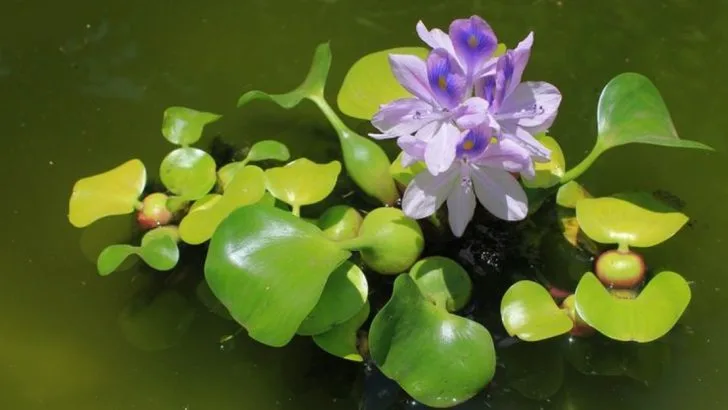Pond gardens bring a tranquil, enchanting element to any outdoor space—but it’s the water-loving plants that truly bring them to life. Whether you’re designing a small backyard water feature or a lush natural pond, choosing the right aquatic and semi-aquatic plants can transform still water into a vibrant ecosystem bursting with color and texture.
From the iconic elegance of lotuses and water lilies to the graceful greenery of cattails and pickerelweed, these plants not only add beauty but also support wildlife, oxygenate the water, and help maintain balance in your pond’s environment. Many are also low-maintenance and resilient, making them ideal for both beginners and experienced pond gardeners alike.
Explore these 15 stunning water-loving plants that will turn any pond into a serene, thriving sanctuary.
Water Lily
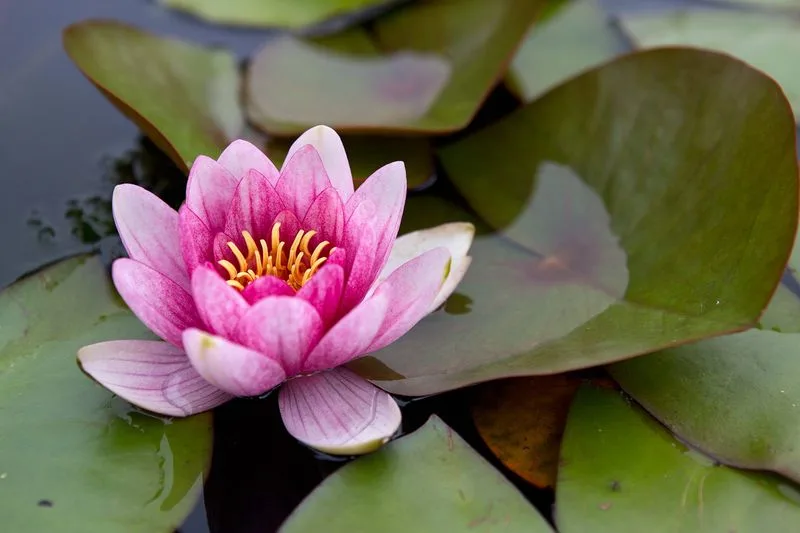
A symbol of purity and beauty, water lilies are the crown jewels of pond gardens. Their vibrant blooms, floating effortlessly on large, flat leaves, create a picturesque scene. These perennials thrive in calm, shallow waters and offer shade and shelter for aquatic life. Water lilies come in various colors, adding a splash of elegance to any pond. Surprisingly low-maintenance, they only require peaceful waters and some sunlight to flourish. Their blooms open in the morning and close at night, adding a dynamic touch to your garden’s rhythm.
Lotus
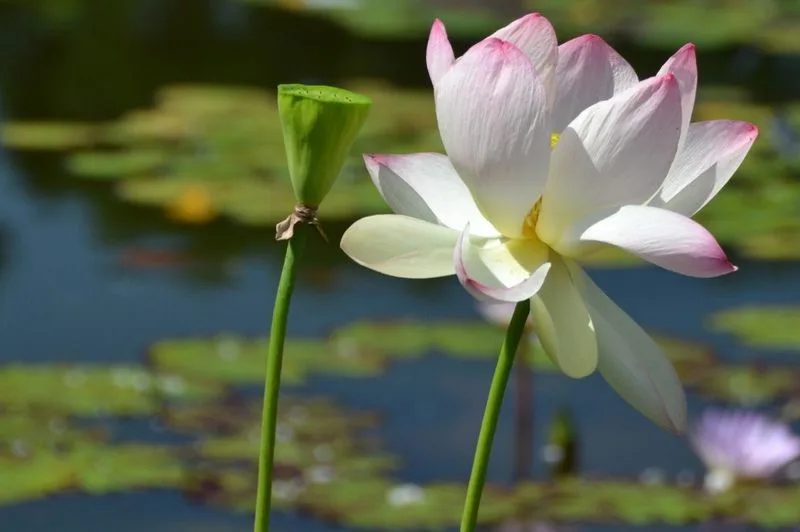
With their majestic flowers rising above the water, lotuses are revered in many cultures for their spiritual symbolism. These stunning plants can transform any pond into a serene sanctuary. Known for their large, umbrella-like leaves and striking blooms, lotuses provide not only beauty but also shade for pond inhabitants. They require full sun and thrive in still, warm waters. Although they share similarities with water lilies, lotuses grow taller, making them a striking focal point in any water garden.
Pickerelweed
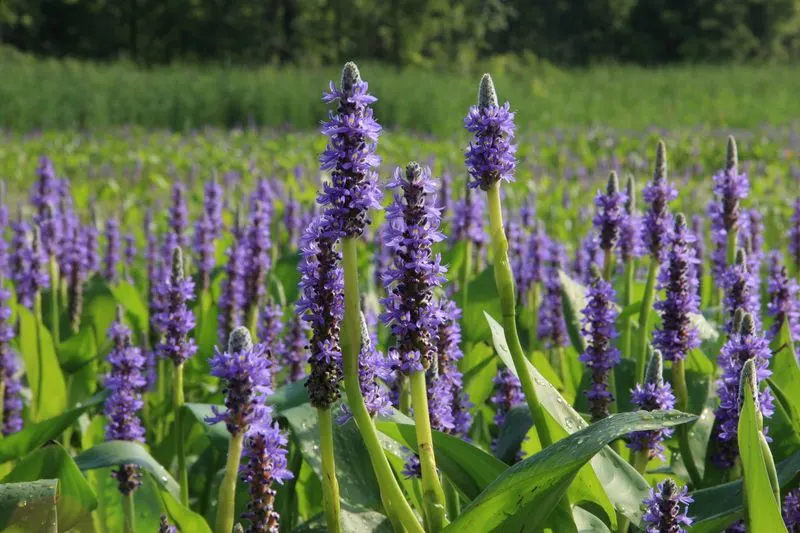
A native to North America, pickerelweed features vibrant spikes of purple flowers, adding a vertical accent to pond margins. These hardy plants are perfect for attracting pollinators like butterflies and bees. Their heart-shaped leaves create a lush backdrop, making them a charming addition to any pond. Pickerelweed thrives in shallow waters and is easy to grow, requiring minimal care. Its long blooming season ensures a vibrant display from spring through fall, keeping your pond lively and colorful.
Water Hyacinth

Known for their rapid growth and striking appearance, water hyacinths are a captivating choice for pond gardens. Their glossy, bulbous leaves float effortlessly, while their lavender-blue flowers add a splash of color. These plants are excellent for water filtration, helping maintain water clarity. However, they can become invasive, so it’s essential to manage their spread. Water hyacinths thrive in sunny conditions, transforming any pond into a vibrant, living ecosystem with their lush foliage and vibrant blooms.
Cattails
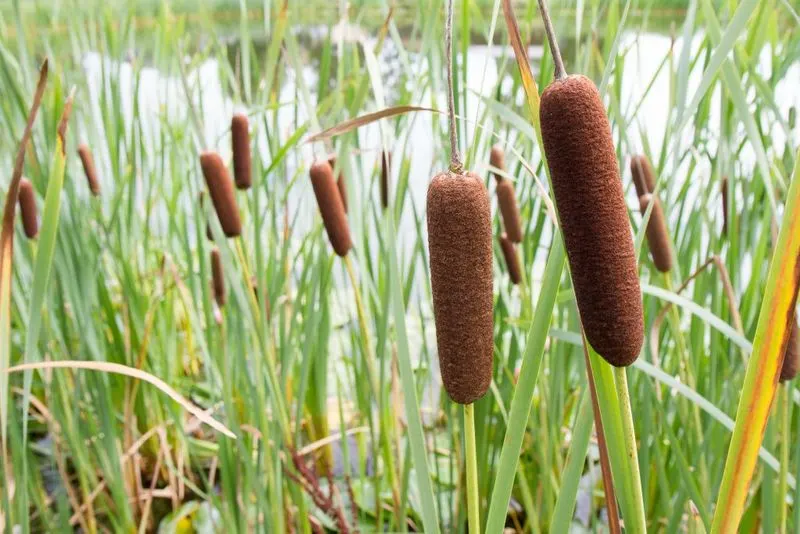
Cattails are iconic fixtures in pond landscapes, known for their tall, reed-like appearance and distinctive brown flower spikes. These plants are excellent for erosion control, stabilizing the edges of ponds with their extensive root systems. They provide habitat and food for wildlife, making them a valuable addition to any natural pond. Cattails prefer full sun and can tolerate a wide range of water conditions, making them versatile and easy to grow. Their architectural form adds structure and height to pond gardens.
Marsh Marigold
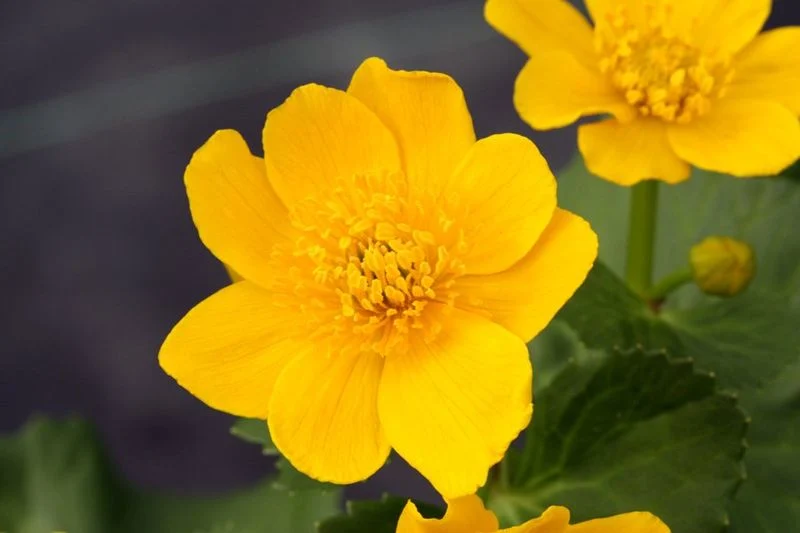
Marsh marigolds bring a cheerful splash of yellow to pond edges, their buttercup-like flowers heralding the arrival of spring. These early bloomers thrive in wet, marshy conditions, bringing vibrancy to shaded or sunlit areas alike. Their glossy green leaves complement the bright blooms, creating a lively display. Marsh marigolds are low-maintenance and spread gently, filling spaces with their sunny disposition. They’re perfect for softening pond edges and attracting pollinators, enhancing the ecological balance of your pond garden.
Arrowhead
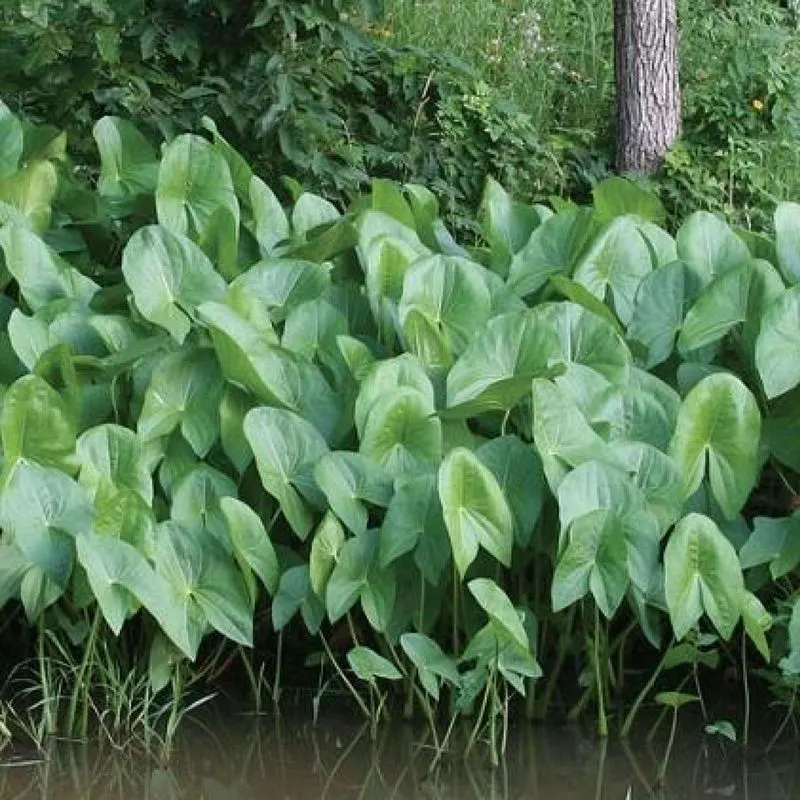
Named for their arrow-shaped leaves, arrowhead plants are a striking addition to any pond garden. Their foliage stands upright, creating a unique silhouette against the water. In summer, they produce delicate white flowers that add a touch of elegance to the scene. Arrowhead plants thrive in shallow waters and are easy to care for, making them perfect for beginners. They provide habitat for aquatic creatures and help stabilize pond banks, contributing to a balanced ecosystem. Their graceful form adds a touch of visual interest to pond landscapes.
Water Iris
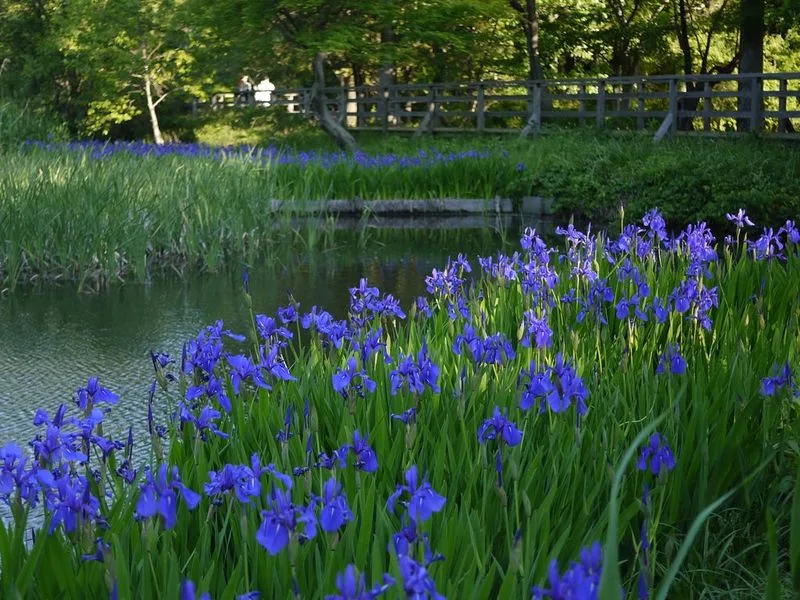
Water irises bring a splash of color and texture to pond gardens with their elegant, sword-like leaves and bright, showy blooms. These hardy perennials thrive in shallow water or damp soil and are known for their ability to adapt to varying conditions. Their flowers, ranging from purple to yellow, attract pollinators, adding biodiversity to your garden. Water irises are incredibly versatile, providing both beauty and environmental benefits. They’re excellent for naturalizing pond edges, creating a seamless transition between water and land.
Papyrus

Papyrus plants introduce a touch of exotic elegance to pond gardens. These ancient plants, once used to make paper, are recognized by their tall stalks and umbrella-like clusters of fine leaves. Papyrus thrives in shallow water or moist soil and prefers a sunny location. Their striking form adds height and drama to pond landscapes, creating a focal point that draws the eye. Besides their visual appeal, papyrus plants provide habitat for wildlife and help improve water quality, making them both beautiful and functional.
Water Lettuce
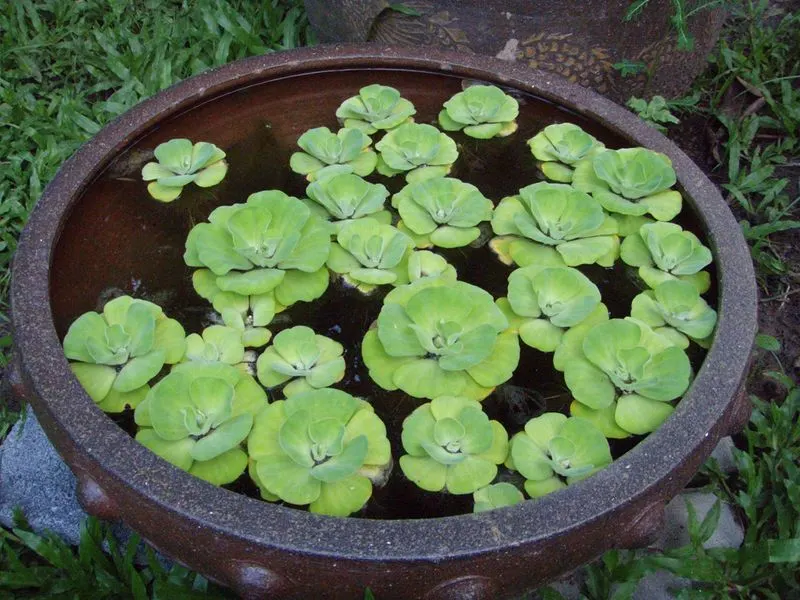
Floating like little green rosettes, water lettuce adds a soft, velvety texture to pond surfaces. These free-floating plants help control algae by shading the water and absorbing excess nutrients. Water lettuce thrives in warm temperatures and requires minimal care, making it a favorite among pond enthusiasts. It’s essential to keep their growth in check, as they can spread quickly. With their charming appearance and ecological benefits, water lettuce makes a beautiful addition, creating a serene, green carpet that complements other pond plants.
Horsetail Reed
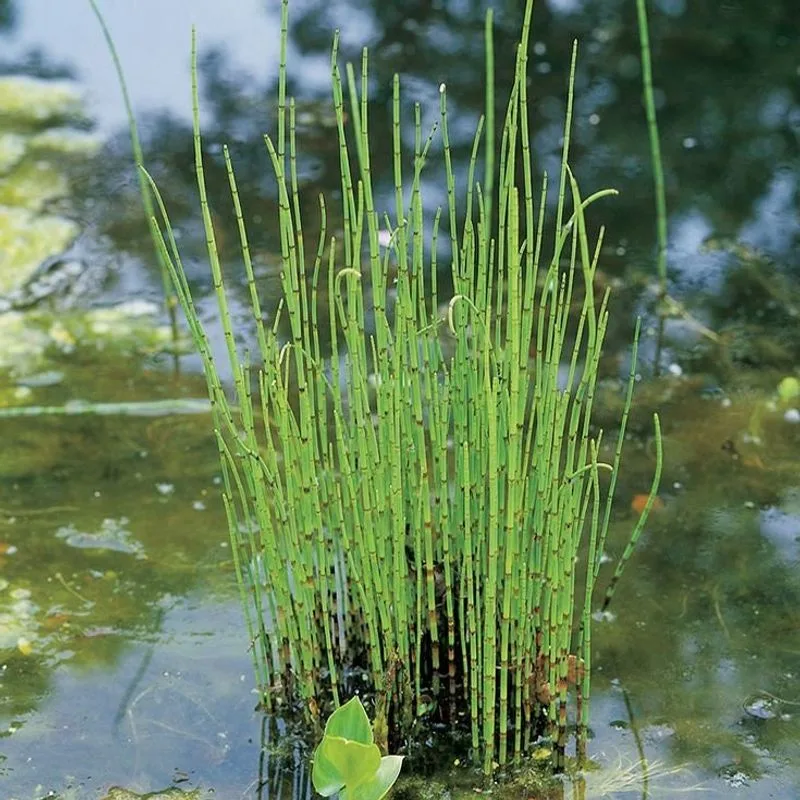
Horsetail reeds, with their jointed, bamboo-like stems, bring a contemporary feel to pond gardens. These ancient plants, dating back to prehistoric times, are easy to grow and maintain, thriving in both water and soil. Horsetail reeds prefer full sun and can be quite hardy, tolerating various conditions. Their vertical growth adds structure and interest, making them ideal for modern pond designs. In addition to their ornamental value, they help stabilize soil and provide shelter for small aquatic creatures, enhancing the pond’s ecosystem.
Sweet Flag
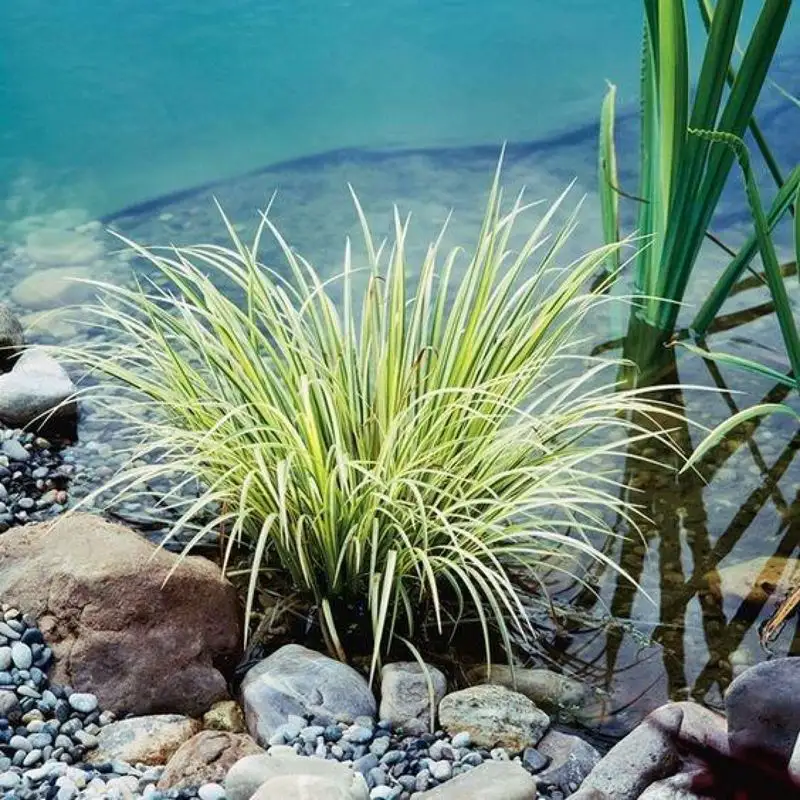
Sweet flag, with its aromatic, sword-like leaves, is a fragrant addition to any water garden. Known for its pleasant scent, it thrives in wet conditions and can add a sensory element to your pond. Sweet flag is easy to grow, requiring little more than moist soil or shallow water. Its foliage creates a lush, grass-like appearance, while its subtle flowers add a hint of color. Perfect for edging ponds, sweet flag provides habitat for wildlife and can help prevent erosion, making it both practical and pretty.
Yellow Flag Iris
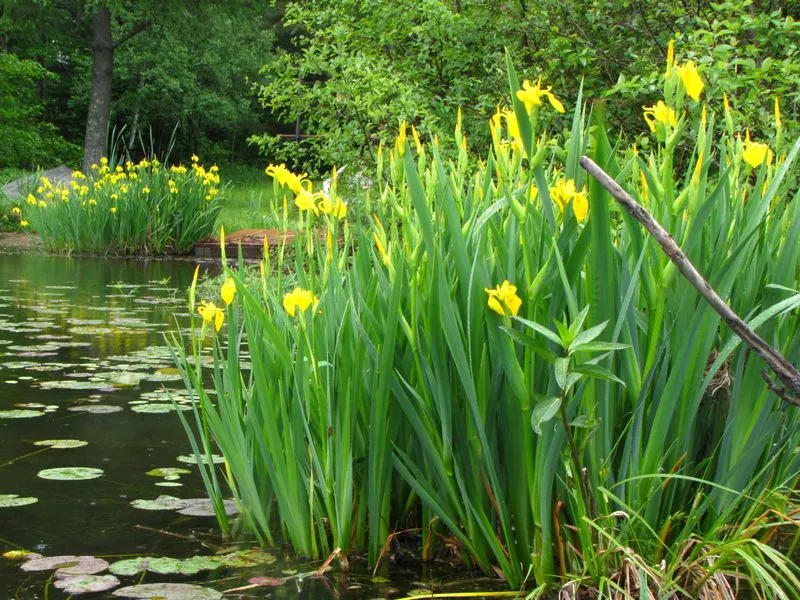
Yellow flag irises are a radiant choice for pond gardens, their brilliant yellow flowers brightening up any waterside location. These plants are not only visually appealing but also incredibly hardy, thriving in wet, marshy conditions. They can tolerate a range of water depths and soil types, making them versatile for various pond settings. Yellow flag irises attract pollinators and provide cover for wildlife, enhancing the biodiversity of your garden. Their bold color and robust nature make them a standout addition to any pond.
Water Violet
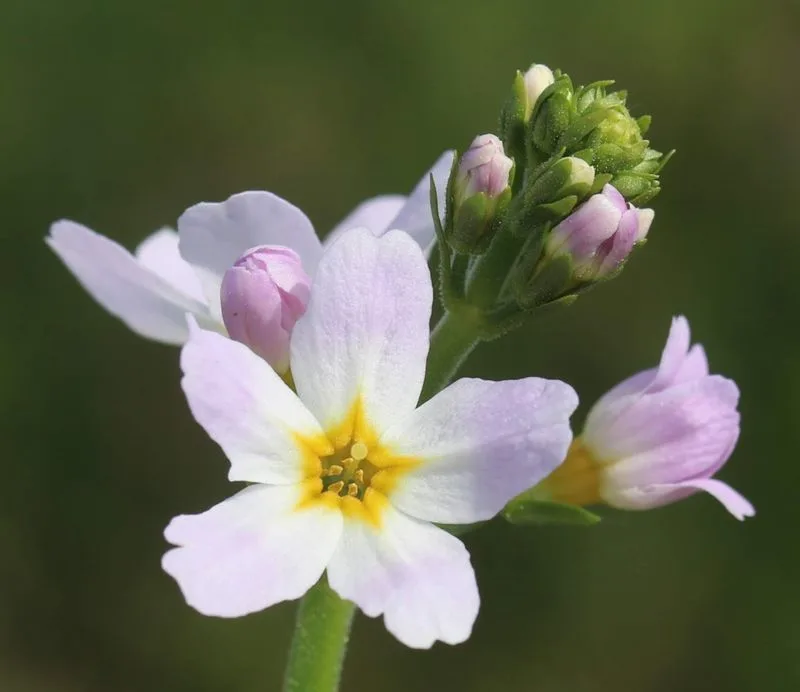
Water violets add a delicate touch to pond gardens with their lovely, lilac-colored flowers and fine, feathery foliage. These charming plants thrive in calm, shallow waters and prefer sunny to partially shaded spots. Water violets are easy to care for and can be a delightful addition to any aquatic setting. They bloom in late spring, creating a gentle, pastel palette that softens the pond’s edge. Beyond their beauty, water violets contribute to a balanced ecosystem, providing shelter for aquatic life and helping maintain water quality.
Frogbit
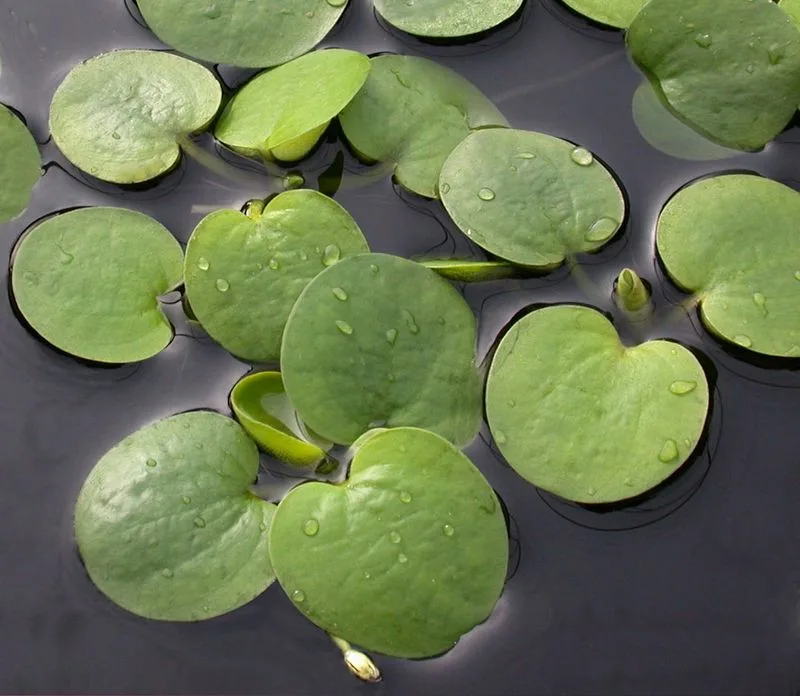
Frogbit brings a playful touch to pond surfaces with its small, round leaves and tiny white flowers. These floating plants are reminiscent of miniature lilies, gently bobbing with the water’s movement. Frogbit thrives in still, nutrient-rich waters and is easy to maintain, making it ideal for beginners. While they provide shade and reduce algae growth, it’s important to manage their spread to prevent overcrowding. Frogbit’s humble charm and ecological benefits make it a delightful addition to any pond, offering a touch of whimsy and function.

